
水循环(英文)(Water Cycle)(国际刊号) 知网目次
- 高T3
- 主管单位:
- 主办单位:
中国环境科学学会水处理与回用专业委员会联合科学出版社、爱思唯尔旗下科爱出版社
- 国际刊号:
2666-4453
- 国内刊号:
- 学科分类:
- 字数:
-
- 有无基金:
- 周期:
国际号刊-年刊
- 特殊属性:
外文期刊
- 电话:
- 邮箱:
- 复合因子:
0
- 综合因子:
0
- 收录:
知网目次
- 级别:
高T3
期刊简介
《水循环》期刊已被查看: 次
更新频次
单位占比
一作占比
投稿指南
1、该刊只有国际刊号。
2、投稿方式:在线投稿。
3、官网网址:
http://www.keaipublishing.com/en/journals/water-cycle
https://www.sciencedirect.com/journal/Water-Cycle
4、投稿系统:https://www.editorialmanager.com/watcyc
5、主办单位网址:http://reuse.reclaimedwater.net/
(中国环境科学学会水处理与回用专业委员会)
6、出刊日期:一年出版1卷。
2023年9月13星期三
《水循环(英文)》(Water Cycle)期刊简介
【微信公众号“Water Cycle”信息】
关于Water Cycle:
《Water Cycle》由中国环境科学学会水处理与回用专业委员会联合科学出版社、爱思唯尔旗下科爱出版社主办,旨在促进水循环与生态学、水文学、水力学、土木工程、环境工程、气象学和地理学等学科交叉融合,促进水循环研究快速发展,致力于培育未来水系统创新理念与革新技术,支撑水资源可持续利用。
水处理与回用专业委员会是中国环境科学学会的下属分支机构,成立于2015年。专业委员会秉承“善水循环、尚法自然”理念,致力于促进水处理与循环利用领域理论、技术、工程、标准和管理研究与创新发展,开展学术交流、人才培育、科普与宣传教育等公益活动,为水资源可持续利用、水生态环境安全保障和生态文明建设做出积极贡献。
专业委员会定期举办水与发展纵论(WaterTalk)、全国水处理与循环利用学术会议(ChinaWTR)、亚洲水循环利用研讨会(AsiaSWR)、全球水循环研讨会(GlobalSWC)和ISO水循环利用国际标准研讨会等高水平学术活动,主办再生水网、Water Cycle国际学术期刊和《水工程科学进展》通讯。
专业委员会网站:http://reuse.reclaimedwater.net/
再生水网:http://www.reclaimedwater.net/
WaterCycle投稿链接:http://www.keaipublishing.com/en/journals/water-cycle/guide-for-authors/#3514771
《水循环(英文)》(Water Cycle)作者指南
【官网信息】
Guide for Authors
INTRODUCTION
Types of paper
Contributions falling into the following categories will be considered for publication:research papers, review articles, short communications, technical notes, editorials, short reviews, case reports, opinion papers and feature articles.
Please ensure that you select the appropriate article type from the list of options when making your submission. Authors contributing to special issues should ensure that they select the special issue article type from this list.
Highlights
Highlights are optional yet highly encouraged for this journal, as they increase the discoverability of your article via search engines. They consist of a short collection of bullet points that capture the novel results of your research as well as new methods that were used during the study (if any). Please have a look at the examples here: example Highlights.
Highlights should be submitted in a separate editable file in the online submission system. Please use 'Highlights' in the file name and include 3 to 5 bullet points (maximum 85 characters, including spaces, per bullet point).
BEFORE YOU BEGIN
Ethics in Publishing
For information on Ethics in Publishing and Ethical guidelines for journal publication see https://www.elsevier.com/publishingethics and https://www.elsevier.com/ethicalguidelines.
Conflict of interest
All authors are requested to disclose any actual or potential conflict of interest including any financial, personal or other relationships with other people or organizations within three years of beginning the submitted work that could inappropriately influence, or be perceived to influence, their work. See also https://www.elsevier.com/conflictsofinterest.
Submission declaration
Submission of an article implies that the work described has not been published previously (except in the form of an abstract or as part of a published lecture or academic thesis), that it is not under consideration for publication elsewhere, that its publication is approved by all authors and tacitly or explicitly by the responsible authorities where the work was carried out, and that, if accepted, it will not be published elsewhere including electronically in the same form, in English or in any other language, without the written consent of the copyright-holder.
Changes to authorship
This policy concerns the addition, deletion, or rearrangement of author names in the authorship of accepted manuscripts:
Before the accepted manuscript is published in an online issue: Requests to add or remove an author, or to rearrange the author names, must be sent to the Journal Manager from the corresponding author of the accepted manuscript and must include: (a) the reason the name should be added or removed, or the author names rearranged and (b) written confirmation (e-mail, fax, letter) from all authors that they agree with the addition, removal or rearrangement. In the case of addition or removal of authors, this includes confirmation from the author being added or removed. Requests that are not sent by the corresponding author will be forwarded by the Journal Manager to the corresponding author, who must follow the procedure as described above. Note that: (1) Journal Managers will inform the Journal Editors of any such requests and (2) publication of the accepted manuscript in an online issue is suspended until authorship has been agreed.
After the accepted manuscript is published in an online issue: Any requests to add, delete, or rearrange author names in an article published in an online issue will follow the same policies as noted above and result in a corrigendum.
Copyright
Upon acceptance of an article, authors will be asked to complete a 'License Agreement' (see more information on this). Permitted third party reuse of open access articles is determined by the author's choice of user license.
Author rights
For open access publishing, this journal uses a licensing agreement. Authors will retain copyright alongside scholarly usage rights, and KeAi Communications Co., Ltd. will be granted exclusive publishing and distribution rights.
Role of the funding source
You are requested to identify who provided financial support for the conduct of the research and/or preparation of the article and to briefly describe the role of the sponsor(s), if any, in study design; in the collection, analysis and interpretation of data; in the writing of the report; and in the decision to submit the paper for publication. If the funding source(s) had no such involvement then this should be stated. Please see https://www.elsevier.com/funding.
Open access
This is an open access journal: all articles will be immediately and permanently free for everyone to read and download. To provide open access, this journal has an open access fee (also known as an article publishing charge APC) which needs to be paid by the authors or on their behalf e.g. by their research funder or institution. Permitted third party (re)use is defined by the following Creative Commons user licenses.
Creative Commons Attribution-NonCommercial-NoDerivs (CC BY-NC-ND)
For non-commercial purposes, lets others distribute and copy the article, and to include in a collective work (such as an anthology), as long as they credit the author(s) and provided they do not alter or modify the article.
Creative Commons Attribution (CC BY): Allows users to copy, to create extracts, abstracts and new works from the Article, to alter and revise the Article and to make commercial use of the Article (including reuse and/or resale of the Article by commercial entities), provided the user gives appropriate credit (with a link to the formal publication through the relevant DOI), provides a link to the license, indicates if changes were made and the licensor is not represented as endorsing the use made of the work. The full details of the license are available at https://creativecommons.org/licenses/by/4.0/.
This journal is a peer reviewed, open access journal. To provide open access, this journal has an open access fee (also known as an article publishing charge APC) which needs to be paid by the authors or on their behalf e.g. by their research funder or institution. The Article Processing Charge (APC) for this journal is USD 700, excluding taxes. For all papers submitted before the 31st of December 2021, the article publication charge will be waived making it free to submit to the journal. Peer review under the responsibility of KeAi Communications Co., Ltd.
Author Rights
For open access publishing this journal uses a licensing agreement. Authors will retain copyright alongside scholarly usage rights and KeAi Communications Co., Ltd. will be granted publishing and distribution rights.
Language (usage and editing services)
Please write your text in good English (American or British usage is accepted, but not a mixture of these). Authors who feel their English language manuscript may require editing to eliminate possible grammatical or spelling errors and to conform to correct scientific English may wish to use the English Language Editing service available from Elsevier's Author Services.
Submission
Our online submission system guides you stepwise through the process of entering your article details and uploading your files. The system converts your article files to a single PDF file used in the peer-review process. Editable files (e.g., Word, LaTeX) are required to typeset your article for final publication. All correspondence, including notification of the Editor's decision and requests for revision, is sent by e-mail.
Submit your article
Please submit your article via https://www.editorialmanager.com/watcyc/default.aspx.
Additional information
Tables and figures may be presented with captions within the main body of the manuscript; if so, figures should additionally be uploaded as high resolution files.
Additional Information
Tables and figures may be presented with captions within the main body of the manuscript; if so, figures should additionally be uploaded as high resolution files.
PREPARATION
Your Paper Your Way
We now differentiate between the requirements for new and revised submissions. You may choose to submit your manuscript as a single Word or PDF file to be used in the refereeing process. Only when your paper is at the revision stage, will you be requested to put your paper in to a 'correct format' for acceptance and provide the items required for the publication of your article.
Novelty Statement
All submitted manuscripts should include a 'novelty statement' (80 words maximum) to clearly state the novelties and implications of the work relating to water cycle in the cover letter.
Editorial Policies
For information on Editorial Policies for journal publication refer to http://www.keaipublishing.com/en/authors-and-editors/editorial-policies/
Peer review
This journal operates a single blind review process. All contributions are sent to a minimum of two independent expert reviewers to assess the scientific quality of the paper. The Editor is responsible for the final decision regarding acceptance or rejection of articles. The Editor's decision is final. For more information on the types of peer review, please visit: https://www.elsevier.com/reviewers/peer-review.
Use of wordprocessing software
It is important that the file be saved in the native format of the wordprocessor used. The text should be in single-column format. Keep the layout of the text as simple as possible. Most formatting codes will be removed and replaced on processing the article. In particular, do not use the wordprocessor's options to justify text or to hyphenate words. However, do use bold face, italics, subscripts, superscripts etc. When preparing tables, if you are using a table grid, use only one grid for each individual table and not a grid for each row. If no grid is used, use tabs, not spaces, to align columns. The electronic text should be prepared in a way very similar to that of conventional manuscripts (see also the Guide to Publishing with Elsevier: https://www.elsevier.com/guidepublication). Note that source files of figures, tables and text graphics will be required whether or not you embed your figures in the text. See also the section on Electronic illustrations.
To avoid unnecessary errors you are strongly advised to use the "spell-check" and "grammar-check" functions of your wordprocessor.
……
更多详情:
http://www.keaipublishing.com/en/journals/water-cycle/guide-for-authors/
《水循环》同类水利工程期刊
-
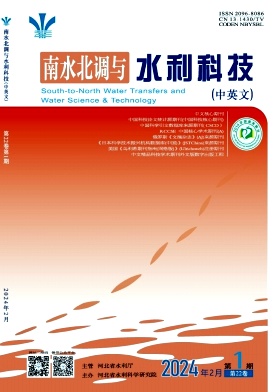
南水北调与水利科技(中英文)
北核,科核,CSCD扩,武A
CN中文-双月刊影响因子2.545
-
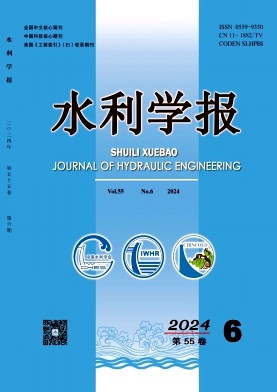
水利学报
北核,CSCD,科核,武A+,高T1,EI(中国2024)
CN中文-月刊影响因子3.916
-
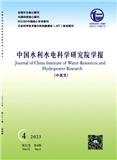
中国水利水电科学研究院学报(中英文)(原:中国水利水电科学研究院学报)
北核,科核,武B+,CACJ-扩展
CN中文-双月刊影响因子1.758
-

水文
北核,科核,CSCD扩,武A-
CN中文-双月刊影响因子1.599
-

中国农村水利水电
北核,科核,武A-,CACJ-扩展
CN中文-月刊影响因子1.514
-
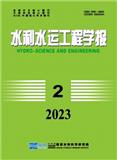
水利水运工程学报
北核,科核,CSCD扩,武A-,高T1,高T3,CACJ-扩展
CN中文-双月刊影响因子1.947
-
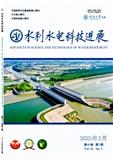
水利水电科技进展
北核,CSCD,科核,武A
CN中文-双月刊影响因子2.256
-
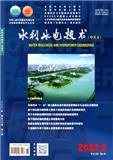
水利水电技术(中英文)
北核,科核,武A
CN中文-月刊影响因子1.853
常见问题
-
水循环杂志社官网、联系方式是什么?
水循环杂志社官网:http://www.keaipublishing.com/en/journals/water-cycle
投稿网址:https://www.editorialmanager.com/watcyc -
水循环杂志是核心期刊么?
水循环不是核心期刊,级别是:高T3, 是:水利工程分类下的知网目次收录的期刊。
-
请问你们是水循环杂志社吗?
我们不是《水循环》杂志社。本站主要从事期刊信息展示与期刊推荐,不是任何杂志官网,直投稿件请联系杂志社。本站仅提供免费的学术指导、论文辅导、期刊投稿信息整理收集服务。
-
你们指导服务后可以保证文章被发表吗?
期刊发表的成功与否,主要取决于文章内容的质量。编辑老师会根据研究领域、创新性等多因素进行考量。我们会帮助您理解期刊的发表要求,助力提升发表几率,从而增加发表的机会。
-
晋级论文能否在报纸上发表?
在学术界,论文的发表往往被视为研究者职业发展的重要一环。晋级论文,即为了获得更高职称或学术地位而撰写的学术论文,通常需在专业期刊上发表。然而,许多人可能会问
